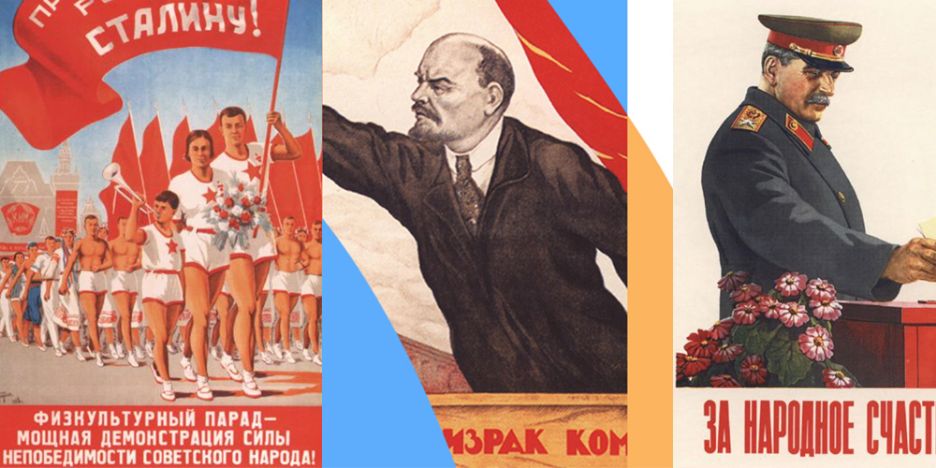We will see what situation the Bolsheviks found themselves in following the October Revolution and what necessitated the rapid and extensive development of Soviet poster art.
You can find the other parts of the series here:
- Part II - The Soviet Union Poster - Soviet Posters During the Civil War
- Part III - Soviet Era Posters - Soviet Poster Art in the 1930s and 1940s
About Our USSR Posters
We have 800+ USSR posters. In order to make it easier to navigate so many Soviet union posters we split the website into 35+ poster categories. It's down to personal taste of course but to maybe make it a bit easier (and faster) we picked around 200 top Soviet posters of the USSR. Our most popular collections are Lenin posters, Stalin posters, Soviet posters of Communism, Cold war posters.
We print on canvas and lux paper and ship internationally to North America and Europe.
Here are our most popular Soviet poster categories:
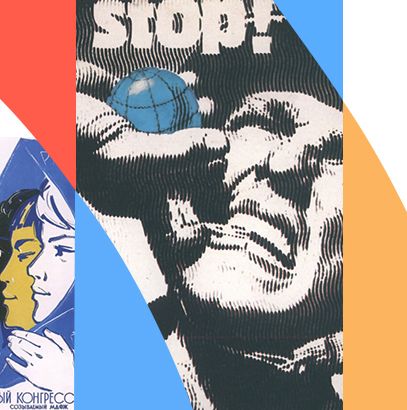 |
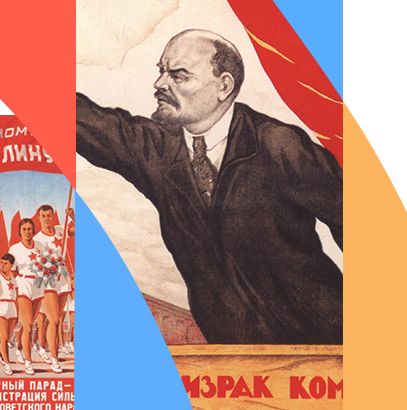 |
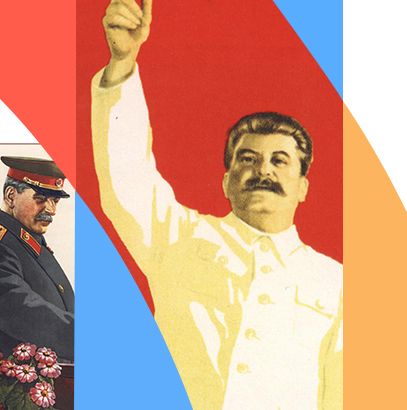 |
| Cold War posters | Communism propaganda posters | Stalin posters |
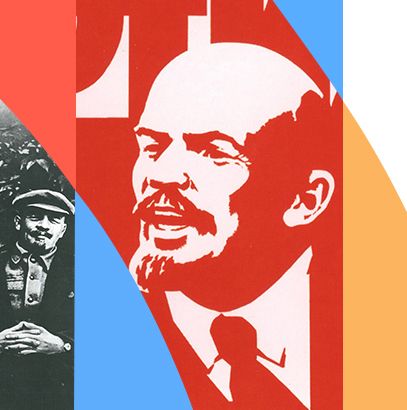 |
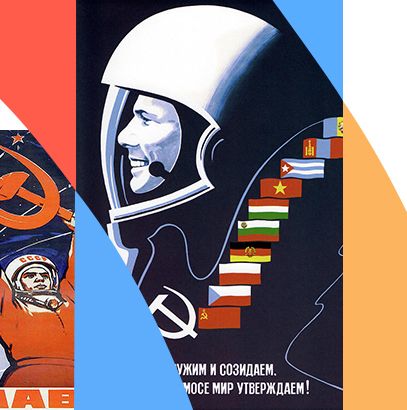 |
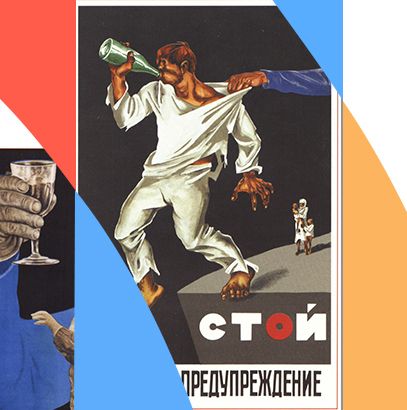 |
| Lenin posters | Soviet space propaganda posters | Soviet anti drinking posters |
USSR Poster Art - How It Began? Invented Traditions
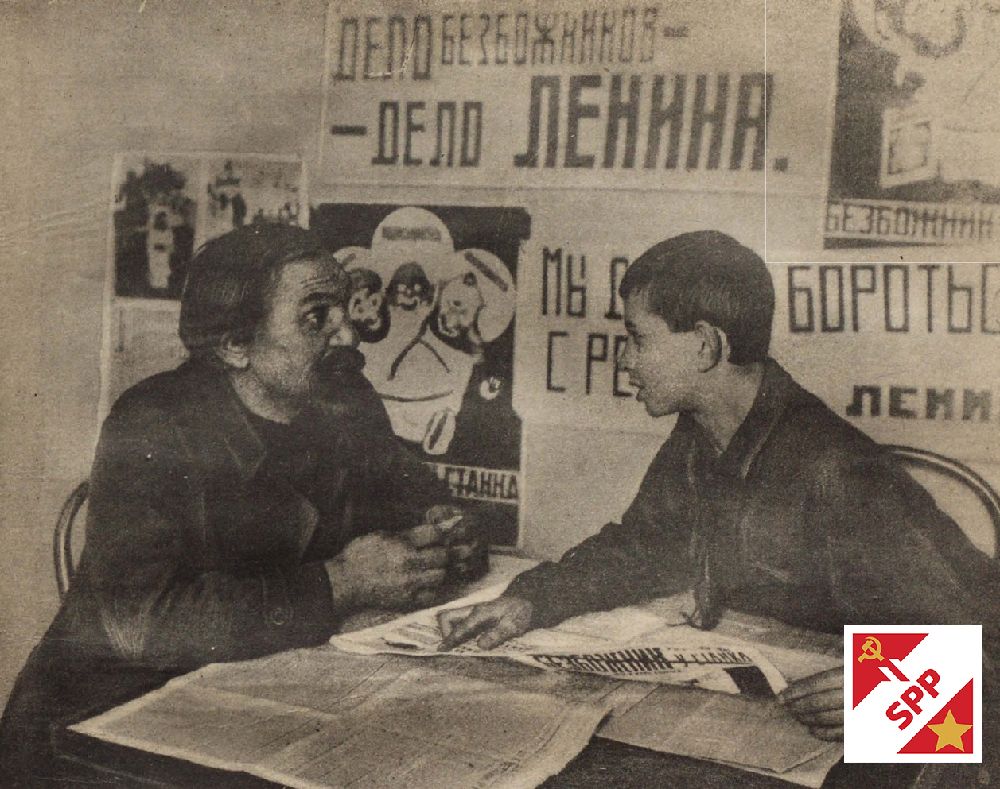 |
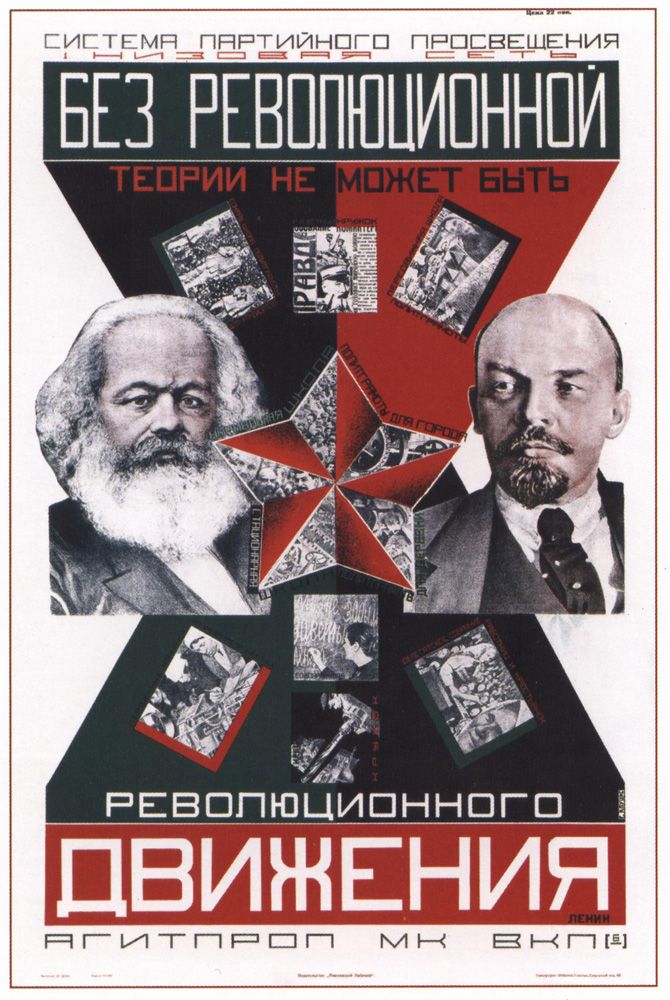 |
|
Soviet workers at a factory canteen with a poster hung behind them, 1927, Ogonek magazine |
Poster of the USSR: Without revolutionary theory there can't be a revolutionary movement! Lenin and Marx |
The Bolsheviks seized power in 1917 and faced a profound issue to address. They had to warp public consciousness into accepting and believing in a new reality - a new meaning. New meaning of the past, present and future had to be based on this new reality. Later on we will find out what role propaganda posters of USSR played in this.
Lenin and other leaders, now at the helm of a vast nation in crisis, understood that their political survival and the success of their radical project depended on winning over the people of the new Soviet Union and educating them on the new social-political and historical doctrine. Importantly there wasn't agreement on fundamental interpretations of this meaning among the leaders of the revolution itself. Here are our Communism posters that explore topics related to Socialism, Communism and the Communist Party CPSU.
The October Revolution On Film
Here is an excellent documentary on the Bolshevik October Revolution if you'd like more background on the topic:
Invented Traditions
So at no point during the period the Soviet Union era was this issue of what and how to talk to the nation more accute - they were starting from a blank white board and their political legitimacy depended on it.
Very quickly immediately following the Revolution, the Bolsheviks tried to gain control over public discourse and transform popular viewpoints and beliefs by utilising new symbols, rituals, and visual imagery. Their aim was to create a new immense message, as accessible as possible to everyone, that would lead to the "liberation" of public consciousness and all social norms.
According to the British historian Eric Hobsbawm the medium for the message was what he framed as "invented traditions". These are sets of practices that use repetition to inculcate ideas and norms into people's thinking and behaviour. This then creates perception of continuity with the past. Hence invented traditions.
The 3 Functions Of Invented Traditions
Hobsbawm thought that there are three main functions that invented traditions could have. There were sometimes overlapping with each other.
1. Foundation Of New Social Groups
Invented traditions formed group think and belonging. Including they created the symbols of these social groups and often artificial communities. They established social cohision.
Bolshevik claim to power was based on an ideology. They assigned world-historical importance to the proletaria. It was therefore critically important to elevate the (heroic) importance of the working class and establish their collective idenity in public discourse. The party urgently needed to communicate to the workers the image of the new worker-heroes who were class conscious and who were the chosen heroes of Marxism-Leninism.
Also key was to install "class" as the central epistemological aspect in the new official Marxist-Leninist ideology.
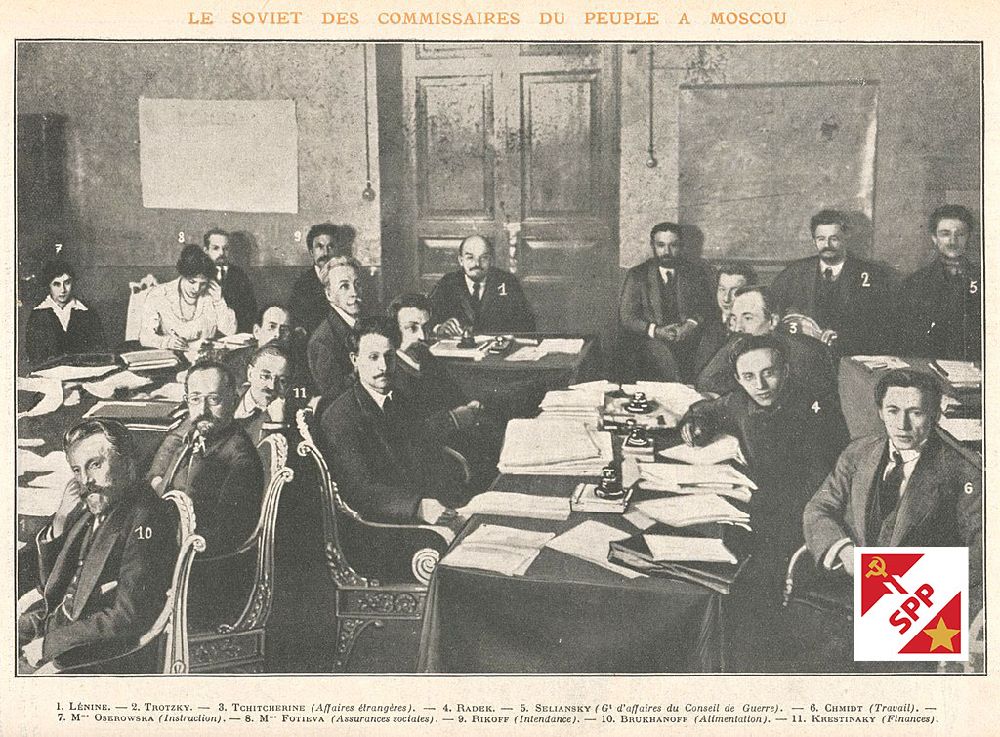 |
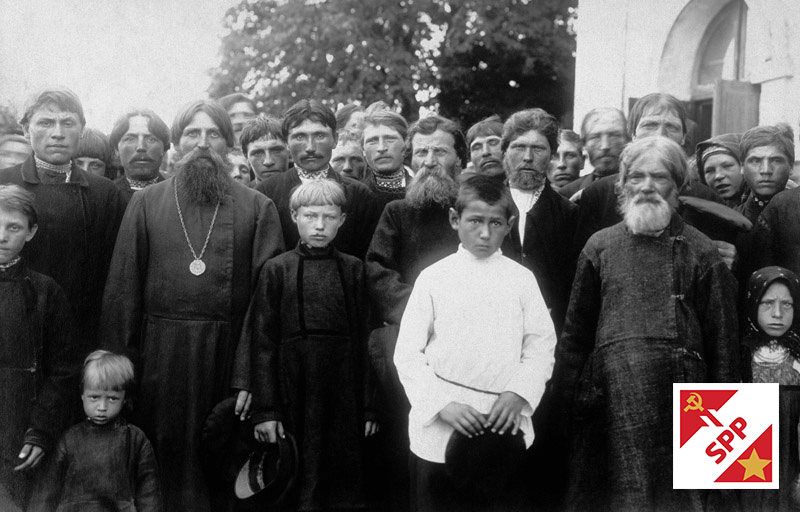 |
| Council of People's Commissars of Soviet Russia, 1920 | Peasants of a Moscow region village around the time of the October Revolution |
Usually social groups are formed around ethnicity, nationality, gender or religion. The new Soviet rulers instead needed class to serve as the identity of the new proletarian political and social group. In the immediate aftermath of the revolution the party leadership struggled with how to define this new collective identity and conducting policies in line with this novel framework.
2. Legitimizing Institutions, Status or Relations of Authority
The October Revolution and similar to it destory and replace institutions and authority relations. They create radically new definitions of political power and social order.
The key problem for the Bolsheviks ater the revolution was to legitimise their power which included the new party-state and a the new relations between subordinate and superordinate groups. The former dominanting elites, and the Provisional Government that had ruled for a brief amount of time, ahd lost their power after the October insurrection.
The new power consisted of the following institutions and entites:
- the Bolshevik party
- the new Soviet state
- the commissars
- the secret police
- the Red Army
- and a small but loud and forceful band of true believers, fellow travelers, opportunists, and henchmen
The new power understood that without legitimising their power they would have a precarious foundation of their new fragile regime. Key in their strategy to solve this issue was the formulation and communication of their extensive and complex narrative of history. It justified the establishment of a "dictatorship of the proletariat" under Bolshevik rule and reinforce the party's authority among the people.
3. Promote Socialisation, Inculcation of Beliefs, Value Systems and Conventions of Behavior
The Bolsheviks traditionally, under Lenin's leadership, unlike most other leftist radicals in Russia had a deep commitment to a monolithic understanding of the truth. Therefore after the revolution they put considerable effort into reordering social but also individual life according to their ideological ideas.
Due to the complexities introduced by the vast size, population and heterogeneity of Russia, the Bolsheviks couldn't enact a comprehensive indoctrination and socialisation program until the 1930s. But they began the drive immediately after the revolution. Their final goal was to create the new Soviet man who would think, speak and act Bolshevik.
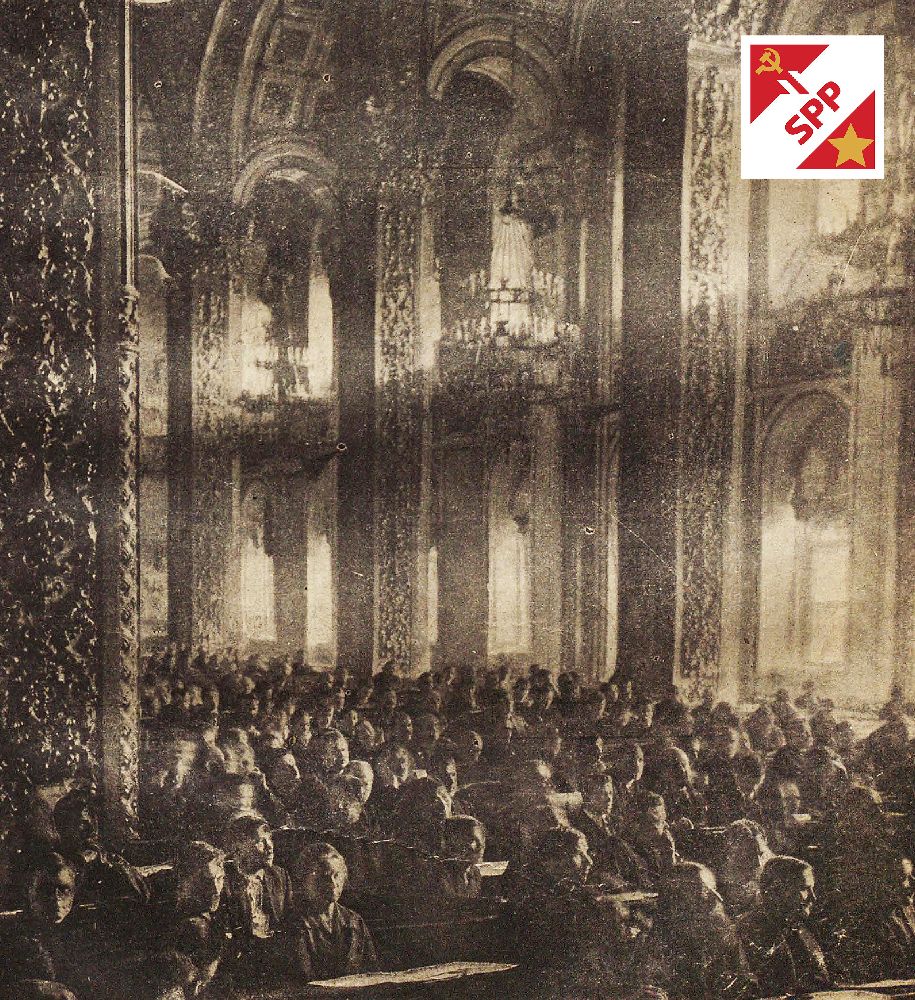 |
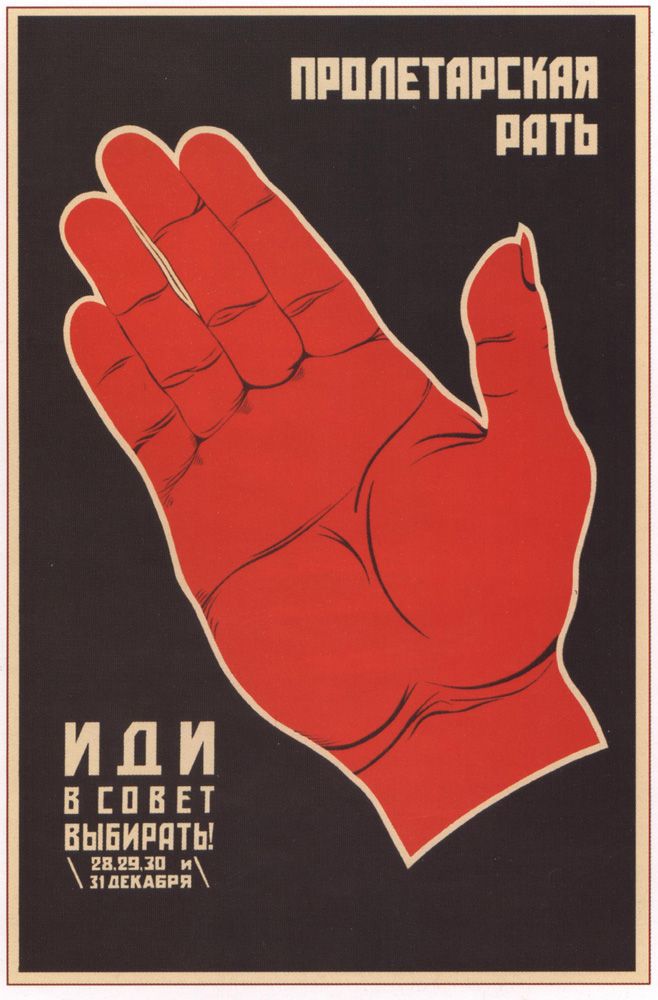 |
| Session of the Central Executive Committee of the Communist Party in Moscow, 1920s. Source: Ogonek magazine | USSR poster: The proletarian army! Go and vote in the local Soviet committee! |
How Did The Bolsheviks Apply Their Invented Traditions
In order to apply invented traditions effectively they have to be homogenous and repeat again and again over time. Their message must be understandable by the target audience. Therefore for a complex country like Russia they mustn't be too sophisticated lyrically. The posters of USSR had to have strong and appealing imagery and relatively simple texts. In 1918 already the Bolsheviks had put in place at scale propaganda production facilities, creative and administration departments.
This drive surpassed by far anything that had been done before. Only a year into the effort noticable USSR poster and state symbols and emblems like the hammer and sickle, the red star and the symbol of the heroic proletariat member/worker were introduced. These would live on to the present day. Holidays (i.e. rituals) now included October Revolution and May day. Novel mediums of USSR propaganda were introduced, for example agitation trains and ships, village reading in designated rooms and others.
Additionally, political communist posters, early brutalist sculptures, agit books, newspapers and magazines, film and radio was used to reach large audiences and spread their messaging. Not as far back as the times of the French Revolution political education had been applied by any nation to form the new Soviet man.
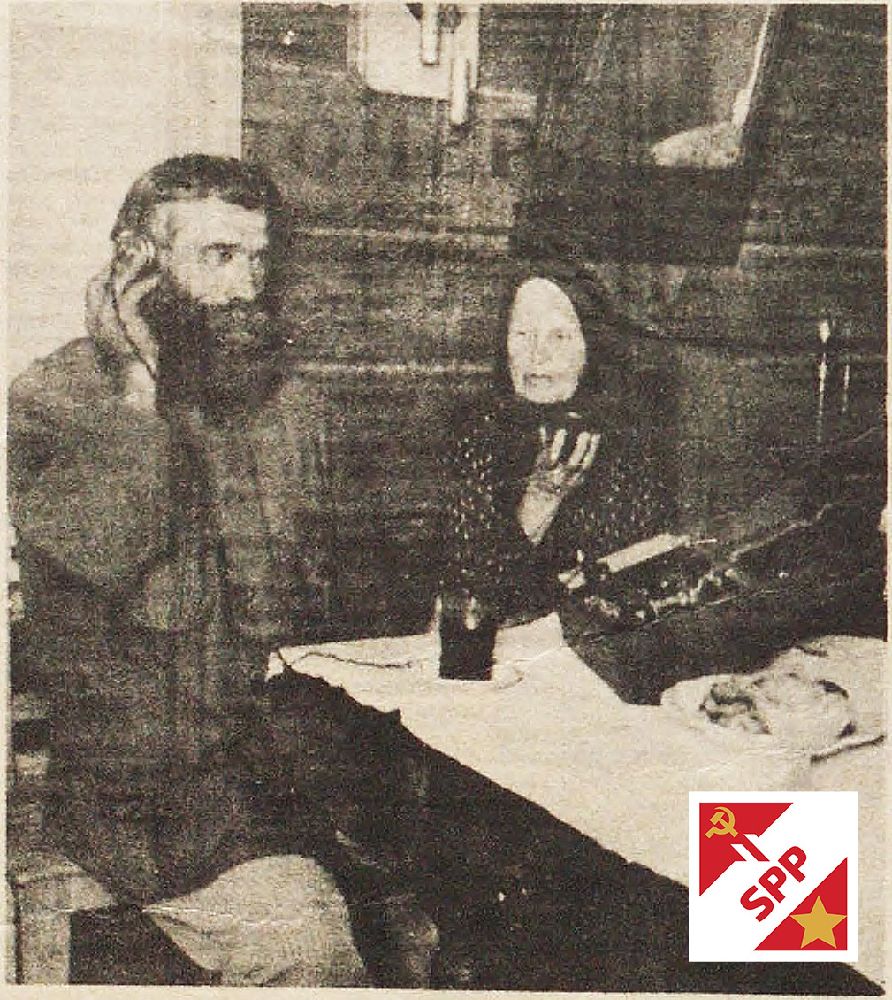 |
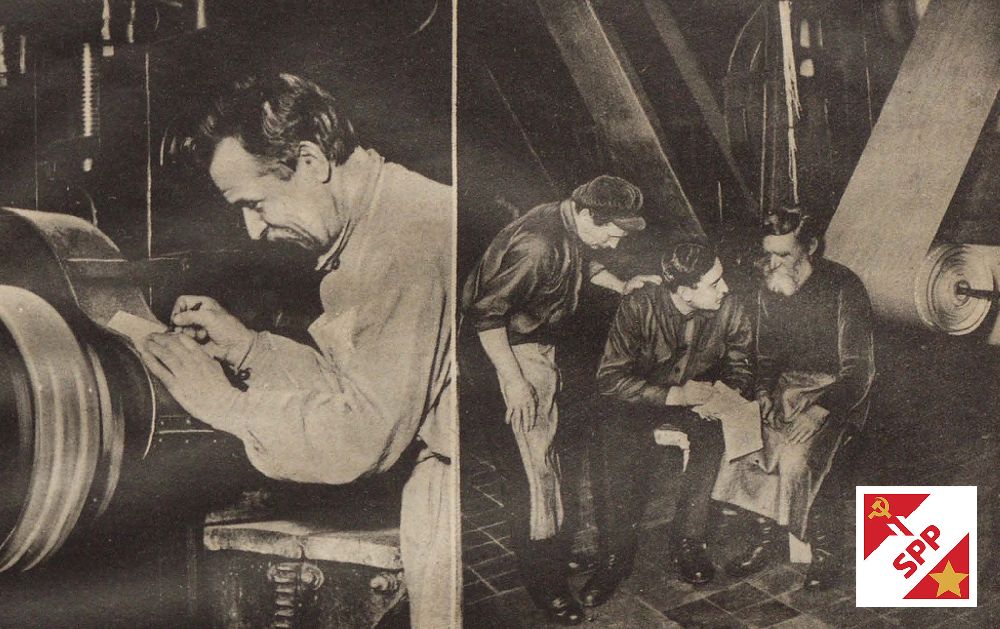 |
| Villager family listening to the radio at home, Ogonek magazine, 1927. | Soviet printing shop, Ogonek magazine, 1927 |
This text is largely based on Iconography of Power: Soviet Political Posters under Lenin and Stalin (Volume 27) First Edition by Victoria E. Bonnell. You can find it on Amazon from this link.
END







